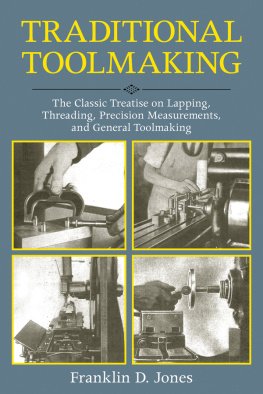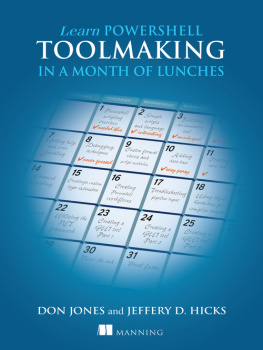Copyright 2012 by Skyhorse Publishing, Inc.
All Rights Reserved. No part of this book may be reproduced in any manner without the express written consent of the publisher, except in the case of brief excerpts in critical reviews or articles. All inquiries should be addressed to Skyhorse Publishing, 307 West 36th Street, 11th Floor, New York, NY 10018.
Skyhorse Publishing books may be purchased in bulk at special discounts for sales promotion, corporate gifs, fund-raising, or educational purposes. Special editions can also be created to specifications. For details, contact the Special Sales Department, Skyhorse Publishing, 307 West 36th Street, 11th Floor, New York, NY 10018 or .
Skyhorse and Skyhorse Publishing are registered trademarks of Skyhorse Publishing, Inc., a Delaware corporation.
Visit our website at www.skyhorsepublishing.com.
10 9 8 7 6 5 4 3 2 1
Library of Congress Cataloging-in-Publication Data is available on file.
ISBN: 978-1-61608-553-7
Printed in the United States of America
PREFACE

As the work of the toolmaker requires an unusual degree of skill and refinement and is of great importance in connection with the modern system of interchangeable manufacture, it is surprising that so little has been published heretofore on tool-making practice. This volume on Modern Toolmaking Methods is believed to meet a real need as it deals with a great variety of tool-room problems and explains many important toolmaking operations. Owing to the varied nature of tool-making practice, no attempt has been made to cover completely every phase of work which might properly be classified as tool-making. This treatise does, however, cover quite completely those methods and operations which are fundamental and essential to the production of small tools and precision work. It also contains many valuable mathematical rules and typical calculations that will aid in the solution of the practical problems which are so frequently encountered in the tool-room.
Some of the methods described represent standard practice, whereas others have been developed by different toolmakers for special operations, and may not prove to be the best under all conditions, because, as every mechanic knows, great accuracy is sometimes necessary regardless of the time required to do the work; whereas, in other cases, the time element is very important. Therefore, any one method may not always prove adequate and it is necessary for the toolmaker to consider the conditions in each case and be guided by his judgment and experience.
Readers of mechanical literature are familiar with MACHINERYS twenty-five cent Reference Books, of which one hundred and forty-one different titles have been published during the past seven years. As many subjects cannot be covered adequately in all their phases in books of this size, and in response to a demand for more comprehensive and detailed treatments of the more important mechanical subjects; it has been deemed advisable to publish a number of larger volumes, of which this is one. This treatise includes part of MACHINERYS Reference Books Nos. 31, 64, 130 and 135. The additional material was compiled largely from articles previously published in MACHINERY. These were contributed by men engaged in many different branches of tool work so that the book is not a record of any one toolmakers experience, but covers a broad field.
As accuracy is essential to practically all toolmaking operations, the various standard methods for locating, spacing and dividing precision work, have been made a special feature of this book. It also deals with such important subjects as lapping, production of straight and circular forming tools and formed cutters, fluting and grinding milling cutters and reamers, bench lathe practice, precision threading, gaging tools and methods, and many other subjects of practical value.
F. D. J.
NEW YORK, February, 1915.
CONTENTS

Button Method of Accurately Locating Work The Disk Method The Disk-and-button Method Accurate Angular Measurements with Disks Square Method of Determining Angles Locating Work by Means of Size Blocks The Mas ter Plate Method Use of Disks for Locating Equally-spaced Holes Methods of Accurately Dividing a Circle Originating a Precision Dividing Wheel Generating a Large Index Plate Various Methods of Accurately Locating Work for Boring on Milling Machines
Materials for Laps Laps for Internal and External Work Lapping Plug and Ring Gages Lapping Conical Holes Laps for Flat Surfaces Method of Using a Flat Lap when Lapping Flat Surfaces Charging Laps Lapping Gage Jaws Rotary Diamond Lap Grading Diamond Dust Making and Lapping Master Gages Rotary Flat Lap
Making Straight Forming Tools Making Forming Tools of Vertical Type Dimensioning and Laying Out a Forming Tool Wheels for Grinding Forming Tools Method of Grinding a Hardened Forming Tool Grinding Angular Surfaces on Forming Tools Gaging an Angular Forming Tool Points on Grinding Vertical Surfaces Joining a Vertical Side and a Beveled Surface Grinding Curved Surfaces Wheels to use for Grinding Curved Surfaces Vertical Forming Tool Calculations Circular Forming Tool Calculations Mak ing Concave Forming Tools in Milling Machines Making Forming Tools for Gear Cutters
Making Accurate Thread Tools Measuring Flat on Acme and U. S. Standard Thread Tools Making Precision Thread Gages Thread Gage Laps Grinding the Thread of a Pre cision Tap Gaging the Angle of a Thread Testing the Lead of a Thread Measuring Screw Thread Diameters
Threading Die Chasers for Cutting Close to a Shoulder Angle of Top Rake for Threading Die Chasers Position of Chaser in Die-head Grinding Threading Die Chasers Making Accurate Thread Chasers
Originating a Straightedge Originating a Surface Plate Making Surface Plates by Lapping Making Accurate Arbors Seasoning Hardened Steel and Cast Iron Cutting Teeth in End and Side Mills Fluting Angular Cutters Wheels for Sharpening Milling Cutters Rotation of Wheel Relative to Cutter Location of Tooth-rest for Cutter Grinding Sharpening Angular Cutters Clearance Angles for Cutter Teeth Sharpening Formed Cutters Sharpening End Mills Sharpening the Side Teeth of Cutters Re-fluting Worn Cutters by Grinding Making Formed Cutters Relieving the Formed Teeth of Cutters Laying Out the Relieving Cam Machining the Relieving Cam Points on Making Reamers The Form and Angle of Reamer Flutes Position of Cutter for Fluting Irregular Spacing of Reamer Cutting Edges In dexing for Irregular Spacing of Reamer Teeth Grinding Reamer Teeth Lead or Taper at End of Straight Reamers Helical Cutting Edges for Reamers Taper Reamers Stepped Roughing Reamers Center Reamers Rose Chuck ing Reamers Cutters for Fluting Rose Chucking Reamers Hand Taps Proportions of Hand Taps Steel for Taps Points on Tap Threading Fluting Hand Taps Relief of Tap Threads Taper Taps Hob Taps Milling Plate Cams Hobs for Worm-gears Relieving Teeth of Spirally-fluted Hobs Making Master Cams Graduating on the Milling Machine Diamond Tools
Precision Jig Work in the Bench Lathe Accurate Gage Work in the Bench Lathe Boring Master Plates in the Bench Lathe Milling, Filing, and Grinding Attachments Set ting Slide-rest for Cylindrical Turning Internal Grinding in Bench Lathe Bench Lathe Turret Attachment Thread Chasing Attachment Thread Milling Attachment The Use of Bench Lathe for Manufacturing Truing a Bench Lathe Bed
Vernier Caliper and Principle of the Vernier Scale Plain and Thread Micrometers How to Read a Micrometer Fixed and Limit Gages Plug and Ring Gages Gage for Accurately Measuring Tapers Reference Gages Adhesion of Johansson Gages A Protractor and Protractor Vernier Sine-bar for Measuring Angles Methods of Testing the Accuracy of Precision Squares Straightedges Height and Depth Gages Center and Test Indicators Special Indicat ing Gages Sectional Gages Pratt & Whitney Precision Measuring Machine Standard Unit of Length


















